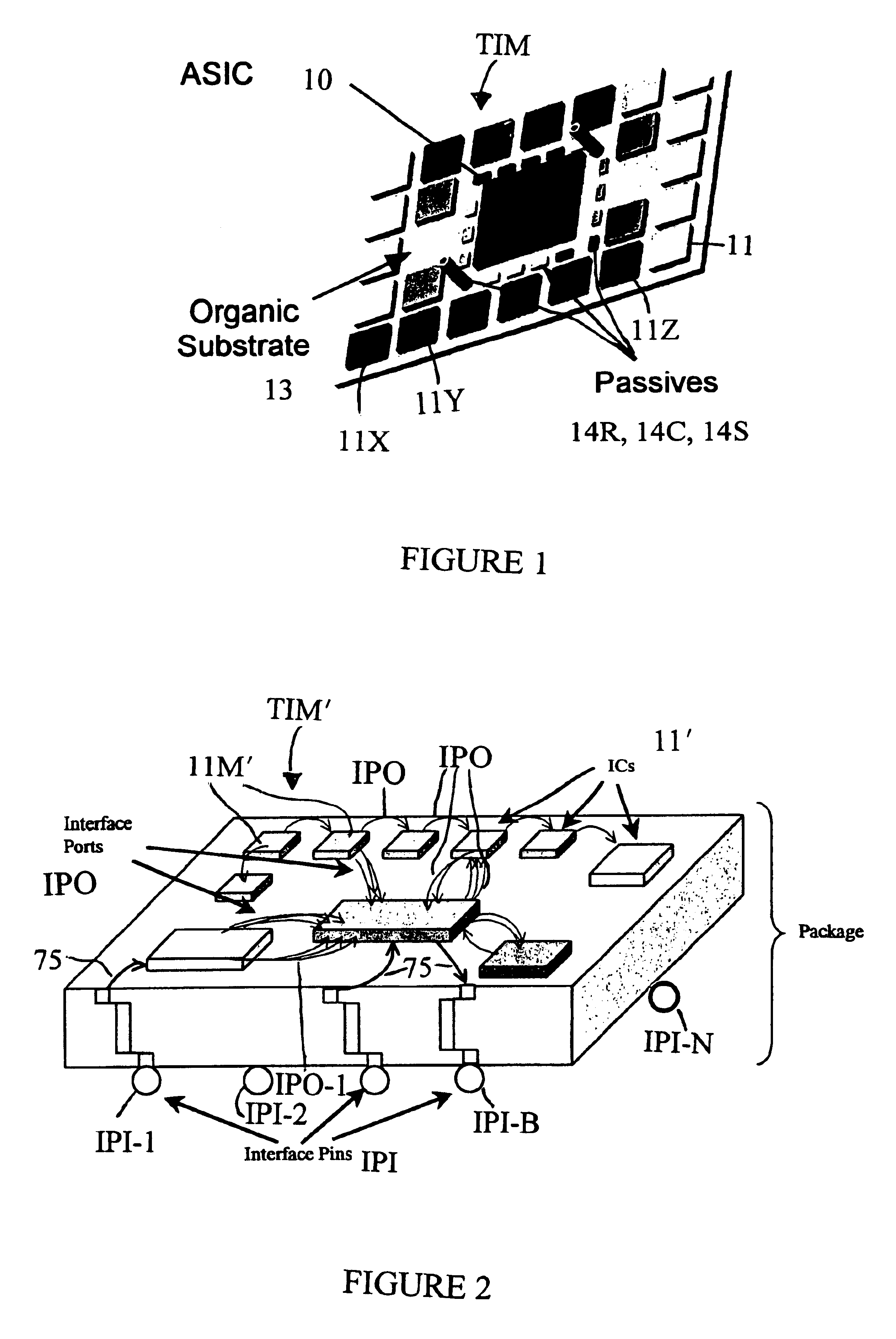Tailored interconnect module
a technology of interconnect modules and connectors, applied in the direction of solid-state devices, basic electric elements, semiconductor devices, etc., can solve the problems of increasing the increasing the difficulty of routing circuit board connections (traces) to pins, and increasing the risk of use, so as to facilitate a high degree of local routing and reduce the total pin count. , the effect of minimizing the total number of nodes connected to external pins
- Summary
- Abstract
- Description
- Claims
- Application Information
AI Technical Summary
Benefits of technology
Problems solved by technology
Method used
Image
Examples
Embodiment Construction
[0015]As discussed above, the tailored interconnect module device of the present invention seeks to reduce the number of interface pins coming to the module. Referring to FIG. 1, the tailored interconnect module (TIM) includes, for example, at its center, an application specific integrated circuit (ASIC) 10 which is surrounded by integrated circuit (IC) devices 11M, 11W, 11X, 11Y, 11Z, etc. which may be memory or functional devices in chip scale packages or bare die auxiliary devices. They are mounted on an organic substrate 13. Passive elements 14R, 14C, 14S, etc. such as resistors and capacitors, etc. may also be mounted on substrate 13.
[0016]Referring now to FIG. 2, the ASIC 10′ is provided with connections for both interface ports IPO and interface pins IPI. In accordance with the practice of this invention, at least one bidirectional interface pin IPI-b is required as a minimum connection to the outside world for a useful tailored interconnect module according to the invention....
PUM
 Login to View More
Login to View More Abstract
Description
Claims
Application Information
 Login to View More
Login to View More - R&D
- Intellectual Property
- Life Sciences
- Materials
- Tech Scout
- Unparalleled Data Quality
- Higher Quality Content
- 60% Fewer Hallucinations
Browse by: Latest US Patents, China's latest patents, Technical Efficacy Thesaurus, Application Domain, Technology Topic, Popular Technical Reports.
© 2025 PatSnap. All rights reserved.Legal|Privacy policy|Modern Slavery Act Transparency Statement|Sitemap|About US| Contact US: help@patsnap.com


